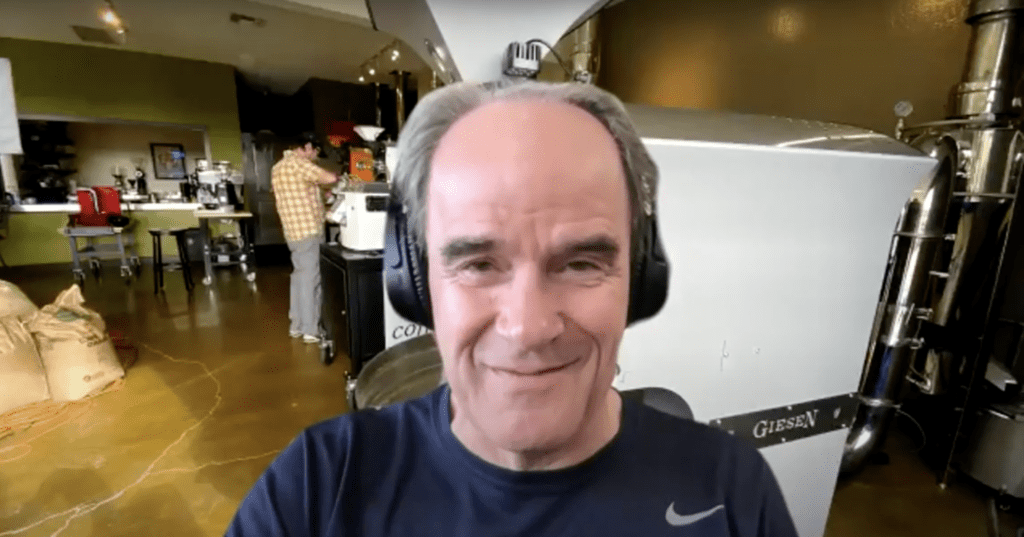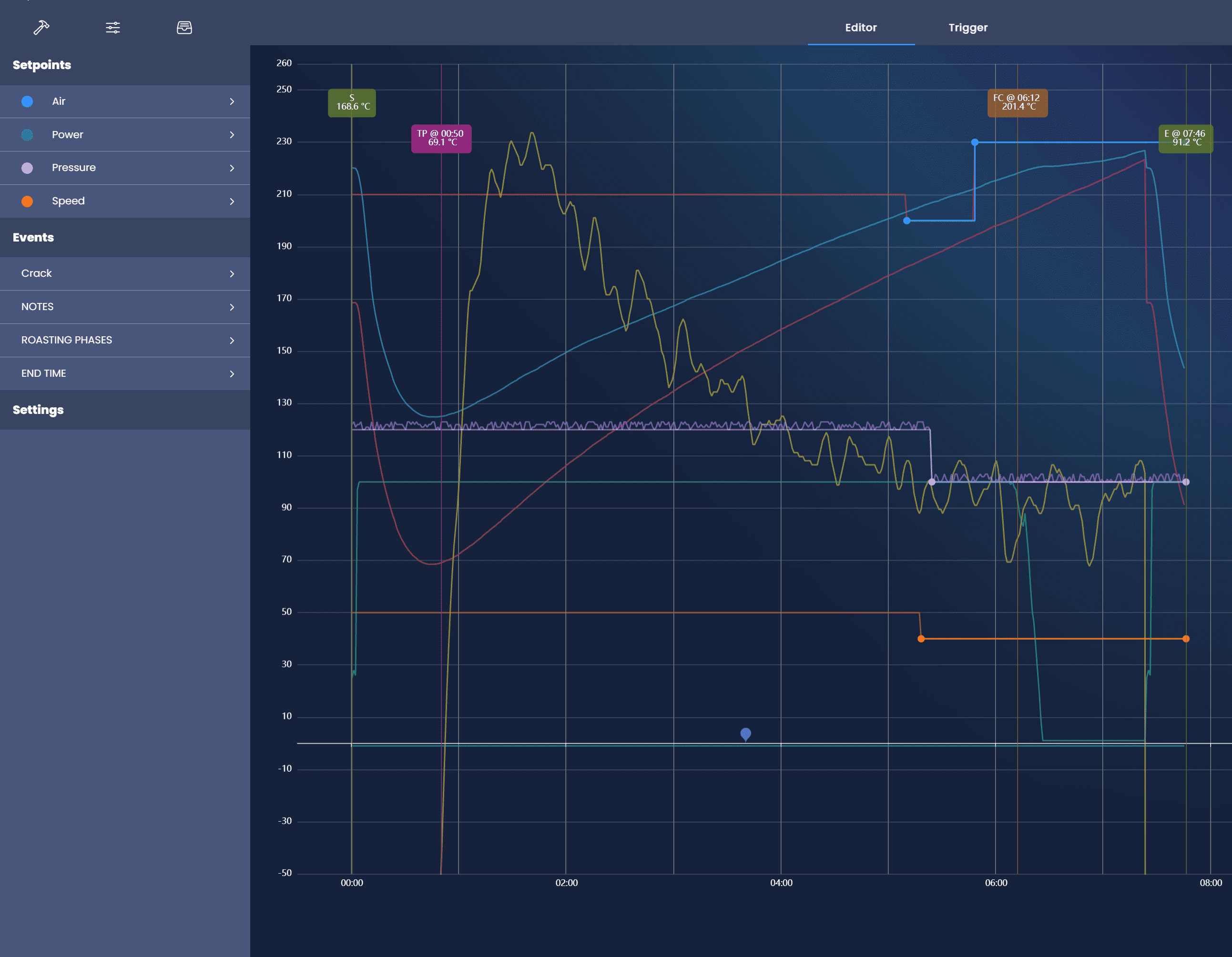In 2021, Willem presented a new webinar every month. He again covered many important topics including Giesen Profiler, roasting for espresso, and roasting safety. From all 12 webinars, we extracted the 10 best tips that you should definitely not miss. ¡Diviértete leyendo!
1. Use simple tools to read your beans
If you want to read your coffee beans, first, it’s important to get as much data about the beans as possible from your importer. Besides that, you can tell a lot about the coffee by using really simple tools. For example, use your nose to smell the green beans. Recognizing the smell of dry hay or green and grassy. Visually, how do you assess the color of the beans? You have to look at the coffee and be like; yellow is yellow, there is no more green in it. So, with that, you can tell a lot about the green coffee going into the roaster. It’s really hard to imagine how you recognize these milestones without the actual coffee right in front of you. And then as a roastmaster, all the extra digital data is great to have.
Episode: Reading coffee beans for profiling
2. Mid-point temperature
The mid-point temperature. It is the temperature in the middle of your first crack- and second crack temperatures. This usually represents a sweet cup of coffee with enough of those browning reactions and caramelization. Even if you are roasting lighter or darker than the mid-point, this can be a useful referent to have. It can be helpful with finding the typical bach size and understanding your roaster.
Episode: How to build roast profiles from scratch
3. Blending
Blending can take a lot of time. It is important to have a methodology for going through your trials and seeing how different coffees work together. You spend months doing this if you are going straight from the roaster to the espresso machine. So instead it often just starts with various components that are roasted on the cupping table and just blending them. If you are getting to the point where the blend tasted good, you can try and brew it as espresso. After testing, continue making adjustments to your blend.
Episode: Roasting and blending for espresso
4. Giesen Profiler
Giesen Profiler gives you the possibility to record your profile and edit it afterward. I think this is a great feature. After editing, you can run the new profile. This way, you can gradually improve on the profiles that you have created and you keep on learning and improving.
Episode: Roasting with the Giesen Profiler
5. Fire safety
It is always important to see how many opportunities there are for fires. Even when you think that you successfully cleaned out your roasting machine and thought about roast safety. It is essential to really understand how your machine is made up. How it’s assembled to understand where issues can occur. I want to address our fire safety protocols that are key to embrace for your roaster:
- One of the key ingredients for a possible roasting fire is the chaff, which you can find in the chaff collector. If the chaff collector is not cleaned consistently, at some point, the chaff will start a fire.
- Pointing at the cooling area. If you remove the cooling screen, you will find a lot of chaff billed up.
- Make sure you keep the burner chamber clean. That is usually the place where chips and chaff starts traveling through your roasting system and cost some sort of fire.
- A lot of near-fire situations can be dealt with if you own a small water sprayer. This works very simply and can even be applied through your sampler. This way, you spray a very small amount of water into your roasting drum. And this will displace the oxygen which can then help you to put out the threat of a fire.
Episode: Roasting safety and fire prevention

6. Interaction of the roast master
We plan our profiles, but once the roast master is performing the profile, there must be a specific decision made to hit certain bean temperature points. That depends on the coffee type and the desired outcome. So, the interaction of the roast master is important. Ultimately, it’s the flavor profile of the coffee that should be the decision-maker, whether or not it’s statistically awkward. Roastmaster decides temperature points to hit by coffee types, desired outcome, and past experiences. It’s the flavor profile of the coffee that should be the decision-maker.
Episode: Troubleshooting roasting profiles
7. Coffee is like wine
A perspective that I like to share is that coffee is behaving more and more like wine. In the coffee industry, for various reasons, we have been comparing our cup of coffee with wine. The tasting of coffee is very similar to wine. But also when we analyze the industry of specialty coffee, take a country like Panama, the approach taken by coffee producers who are also exporters is very much like the approach we see in wine-producing areas. The countries where exquisite wines are produced are often in a high price range. Now, we also see this happening with coffee. A while ago, coffee was sold for 4100 dollars per pound. That seems like a crazy price, but if we compare this with the wine industry, we are just getting started with coffee.
I think for coffee roasters that are looking at purchasing, investing in a coffee roasting system, also requires some thinking on the behaves of the roaster operators. I think they should choose a tool, the roasting machine, that offers them the opportunity to treat their coffee like wine.
Episode: Roasting trends for the future
8. Roasting dark
When it comes to creating roasting profiles for roasting dark, I would like to observe some ground rules. We of course want to make our calculations of the development time also as a percentage. The development as a percentage is the actual time from the very start of the first crack to the end of the roast in relation to the overall duration of the roast. It’s logical that in the case of a darker roast, the development as a percentage is more prolonged. We could say on the low-end 20 percent and on the highest possible 28 percent, which I think is the absolute limit. If you take a roast darker than that with more development, you’re really burning off the fibers of the coffee.
Episode: How to successfully roast dark
9. Considerations when choosing drum material
- Thermal conductivity: how well does the material transfer heat when heat is applied?
- Perforations: To enhance convection heat transfer you may want perforations (small holes) in the drum to help the heated air pass through. It is too hard to make so you need to buy it from a manufacturer.
- Workability: How hard is the material to shape and weld? You need special tools, materials, and expertise to weld stainless steel and cast iron is usually cast to shape.
- Thermal expansion: how much will the material expand when heat is applied? If it expands too much you may stress weld and damage the bearings if the drum is rotated on an axle with journal bearings. In that case, you may want to consider thrust bearings.
- Corrosion resistance: how much will the material oxidize under normal operation? In most cases, the outside of the drum will be of a resistant material to prevent corrosion under normal conditions, or it will develop a protective oxide layer. The inside of the drum will be protected by the bean oils.
Episode: Heat transfer; cast iron vs. other materials
10. Roasting light
When you are going to plot lighter roast profiles, it’s very important to allow sufficient opportunities to also recognize these distinct phases and to take time with your roast profiler, like Giesen profiler. I think with the possibilities of profilers, it remains important not to just keep your eyes on the digital profilers, but also to develop the aptitude to recognize in what phase these beans are when you’re making visual assessments of these coffee beans. That is essential. Specifically, when you’re preparing your profiles for your light roasts. It’s important to always have a benchmark of what the bean of the coffee looks like and what aromas can be smelled at that point.
Episode: Roasting light consistently





Esta entrada tiene un comentario
Thanks for sharing